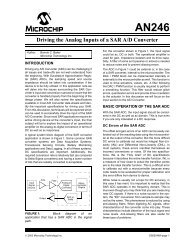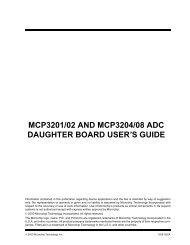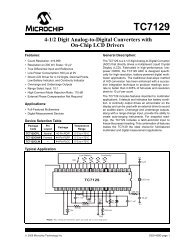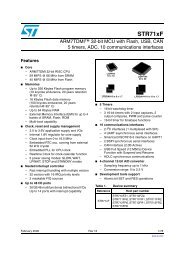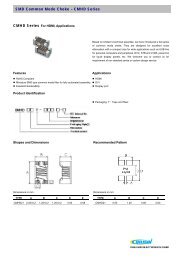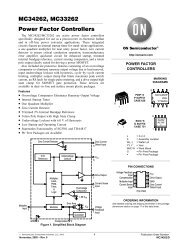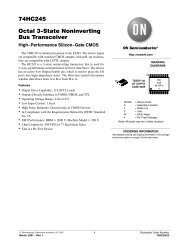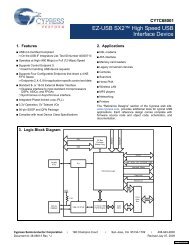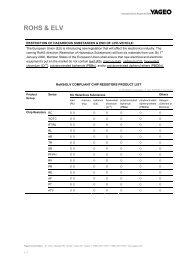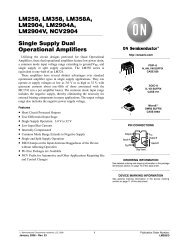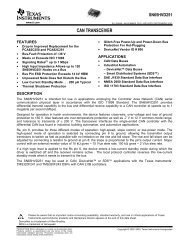Ultralow power ARM-based 32-bit MCU with 384 Kbytes Flash ... - Keil
Ultralow power ARM-based 32-bit MCU with 384 Kbytes Flash ... - Keil
Ultralow power ARM-based 32-bit MCU with 384 Kbytes Flash ... - Keil
- No tags were found...
You also want an ePaper? Increase the reach of your titles
YUMPU automatically turns print PDFs into web optimized ePapers that Google loves.
Electrical characteristicsSTM<strong>32</strong>L162VD, STM<strong>32</strong>L162ZD, STM<strong>32</strong>L162QD, STM<strong>32</strong>L162RDNote:Caution:For C L1 and C L2 , it is recommended to use high-quality ceramic capacitors in the 5 pF to15 pF range selected to match the requirements of the crystal or resonator (see Figure 14).C L1 and C L2, are usually the same size. The crystal manufacturer typically specifies a loadcapacitance which is the series combination of C L1 and C L2 .Load capacitance C L has the following formula: C L = C L1 x C L2 / (C L1 + C L2 ) + C stray whereC stray is the pin capacitance and board or trace PCB-related capacitance. Typically, it isbetween 2 pF and 7 pF.To avoid exceeding the maximum value of C L1 and C L2 (15 pF) it is strongly recommendedto use a resonator <strong>with</strong> a load capacitance C L ≤7 pF. Never use a resonator <strong>with</strong> a loadcapacitance of 12.5 pF.Example: if you choose a resonator <strong>with</strong> a load capacitance of C L = 6 pF and C stray = 2 pF,then C L1 = C L2 = 8 pF.Figure 14.Typical application <strong>with</strong> a <strong>32</strong>.768 kHz crystal 70/124 Doc ID 022268 Rev 2




